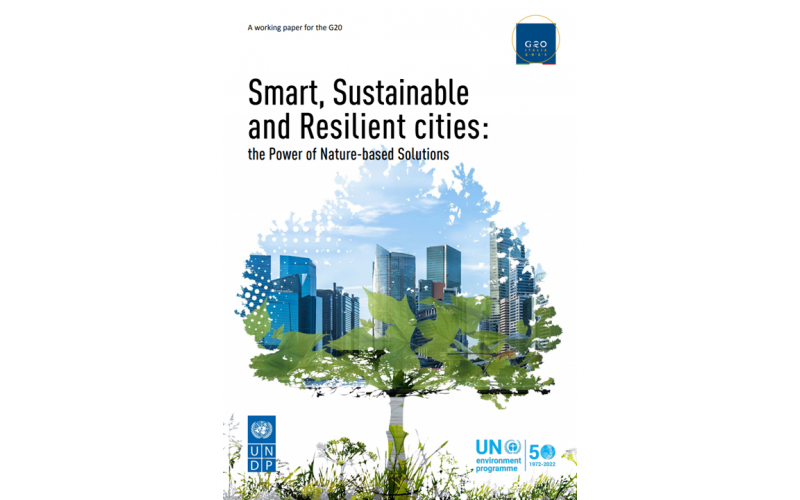What Is The Role Of Architecture In Creating Sustainable And Resilient Cities?

The world is constantly changing, and with population growth at an unprecedented rate, it's more important than ever to create sustainable and resilient cities. Cities are the most important contributors to energy consumption and carbon emissions, and as such, they have a critical role to play in reducing the impact of human activity on the planet. The following are some steps that can be taken to ensure cities are sustainable and resilient.
Encourage Sustainable Transportation
Sustainable transportation systems are crucial to building sustainable and resilient cities. They help reduce congestion, air pollution, and carbon emissions. To achieve this, cities should invest in a range of transportation modes such as cycling and walking pathways, public transport, and car-sharing schemes. In addition, the city should develop policies that encourage active transportation such as supporting telecommuting, promoting the use of e-bikes, and expanding cycle lanes and public transit infrastructure. Transportation is the one area that can have the most impact on a city's sustainability and resilience, and as such, it is an important area for cities to focus on.
Develop Sustainable Infrastructure
Developing sustainable infrastructure is another essential step to building sustainable and resilient cities. This includes renewable energy sources, green infrastructure, waste reduction, and water conservation. Sustainable infrastructure is an effective way of reducing environmental impacts, saving money on energy costs, and improving the quality of life for citizens. Cities should aim to invest in local renewable energy sources such as solar and wind power. They should also encourage green building technologies using sustainable materials and designs. In addition, cities should explore the creation of green spaces, which provide numerous health and environmental benefits. Building sustainable infrastructure ensures cities can withstand the challenges of climate change and maintain their resilience over time.
Promote Sustainable Resource Management
Managing resources sustainably is a critical aspect of building sustainable and resilient cities. Resource management involves the development of policies and practices that reduce waste and encourage the efficient use of available resources. Cities can do this by promoting sustainable water management practices, encouraging households and businesses to reduce energy consumption, and reducing waste. Resource management is particularly important for fast-growing cities that tend to use resources unsustainably. By developing sustainable resource management policies, cities can reduce their environmental impact and preserve natural resources for future generations.
Encourage Sustainable Food Production and Consumption
Sustainable food production and consumption is an often-overlooked aspect of city sustainability. However, it's a critical area for developing sustainable and resilient cities. Sustainable food production involves the use of organic agriculture methods, reducing food waste, and limiting the environmental impact of food production. Sustainable food consumption involves encouraging citizens to eat more locally grown foods, reducing meat consumption, and supporting local food producers. Encouraging sustainable food production and consumption ensures healthy communities, reduces waste, and promotes sustainable economic growth.
Promote Sustainable Economic Development
Promoting sustainable economic development is another critical component of building sustainable and resilient cities. Sustainable economic development refers to economic growth that is environmentally sustainable and socially equitable. Sustainable economic development requires policies and practices that encourage sustainable business practices, protect against environmental degradation, and improve citizen welfare. One way to achieve this is to encourage innovation and entrepreneurship in sustainable industries such as renewable energy, green building, and sustainable transportation. By promoting sustainable economic development, cities can create long-lasting social, economic, and environmental benefits.
Encourage Citizen Engagement
Citizen engagement is a critical element of building sustainable and resilient cities. Citizens are the driving force behind cities, and their participation is essential for developing sustainable policies and practices. Encouraging citizen engagement involves developing multiple channels for citizen participation, such as public consultations, social media, and community involvement in decision-making. Citizen engagement ensures that policies and practices reflect citizens' needs, values, and aspirations, and help promote a sustainable and resilient future for the city.
Promote Sustainable Public Health
Sustainable public health is a crucial aspect of building sustainable and resilient cities. Cities can promote sustainable public health through policies and practices that improve air quality, reduce noise pollution, encourage active transportation, and increase access to green spaces. By promoting sustainable public health, cities can improve the quality of life, reduce healthcare costs, and build resilient communities that can withstand the challenges of climate change.
In Conclusion
In conclusion, building sustainable and resilient cities is not an easy task, but it's essential for creating a future that is environmentally and socially just. Cities can take several steps to ensure they are sustainable and resilient, including encouraging sustainable transportation, developing sustainable infrastructure, promoting sustainable resource management, encouraging sustainable food production and consumption, promoting sustainable economic development, encouraging citizen engagement, and promoting sustainable public health. By taking these steps, cities can ensure a brighter future for all citizens.
FAQs
Why Is Building Sustainable Cities Important?
Building sustainable and resilient cities is essential for reducing environmental impacts and promoting social and economic well-being. Cities have a significant environmental footprint and are responsible for a large proportion of global greenhouse gas emissions. By building sustainable and resilient cities, cities can reduce their environmental impact, adapt to climate change, and promote environmental, economic, and social sustainability. Sustainable cities enable the development of a vibrant, green economy, provide access to modern, efficient, and affordable transportation, encourage citizen engagement and provide healthy public spaces.
What Are Some of the Key Elements of Sustainable Cities?
Some key elements of sustainable cities include sustainable transportation systems, sustainable energy and water management systems, green infrastructure, and sustainable resource management. Sustainable cities also prioritize public health by promoting healthy public spaces and encouraging active transportation. In addition, sustainable cities encourage citizen engagement, promote sustainable economic development, and encourage sustainable food production and consumption.
What Are Some Benefits Of Building Sustainable and Resilient Cities?
Building sustainable and resilient cities has numerous benefits, including reducing carbon emissions and the ecological impact of human activity on the planet, providing access to sustainable public transportation and infrastructure, promoting citizen engagement, and providing healthy public spaces. Sustainable and resilient cities also provide a better quality of life for citizens by promoting economic sustainability, reducing waste, and preserving natural resources.




Post a Comment for "What Is The Role Of Architecture In Creating Sustainable And Resilient Cities?"